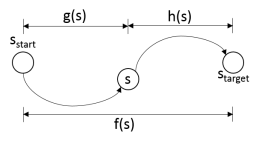Given a connected undirected graph, find its critical nodes (articulation points). A critical node is a node which its removal leaves the graph disconnected.
A straight-forward solution –to remove each node and do a DFS check for connectivity– will get an AC, but this is an implementation that uses Tarjan’s DFS algorithm for finding Articulation Point:
#include <algorithm>
#include <iostream>
#include <fstream>
#include <cstring>
#include <limits>
#include <sstream>
#include <string>
#include <stack>
#include <queue>
#include <map>
#include <set>
using namespace std;
set<int> apNodes, apVis;
set<pair<int, int> > apEdges;
void articulationPointAndBridge(map<int, map<int, int> > &graph, int s) {
// cout << "ARTICULATION POINT AND BRIDGE" << endl;
map<int, int> parent, num_dfs, num_low;
int children_s = 0, num_dfs_size = 0;
stack<int> stk;
parent[s] = s, stk.push(s);
// dfs
while (stk.size()) {
int u = stk.top();
// grey
if (apVis.find(u) == apVis.end()) {
num_dfs[u] = num_low[u] = num_dfs_size++;
apVis.insert(u);
children_s += u != s && parent[u] == s;
for (map<int, int>::reverse_iterator v = graph[u].rbegin();
v != graph[u].rend(); ++v)
// grey to white
if (apVis.find(v->first) == apVis.end())
parent[v->first] = u, stk.push(v->first);
// grey to grey
else if (parent[u] != v->first)
num_low[u] = min(num_low[u], num_dfs[v->first]);
}
// black
else {
if (parent[u] != u) {
// POINTS
if (num_dfs[parent[u]] <= num_low[u])
apNodes.insert(parent[u]);
// BRIDGES
if (num_dfs[parent[u]] < num_low[u])
if (u < parent[u])
apEdges.insert(make_pair(u, parent[u]));
else
apEdges.insert(make_pair(parent[u], u));
num_low[parent[u]] = min(num_low[parent[u]], num_low[u]);
}
stk.pop();
}
}
apNodes.erase(s);
if (children_s > 1)
apNodes.insert(s);
}
int main() {
int n;
string line;
while (cin >> n && n) {
// input
getline(cin, line);
bool inputDone = false;
map<int, map<int, int> > graph;
while (!inputDone) {
getline(cin, line);
stringstream ss(line);
int u, v;
ss >> u;
if (!u)
inputDone = true;
while (ss >> v)
graph[u][v] = 1, graph[v][u] = 1;
}
// solve
apVis.clear(), apNodes.clear(), apEdges.clear();
articulationPointAndBridge(graph, graph.begin()->first);
cout << apNodes.size() << endl;
}
}


